Direction (1 -5)∶ Line graph (I) shows percentage distribution of five flowers in garden A, while line graph (II) shows percentage distribution of these same five flowers in garden ‘B’. Read the data carefully and answer the question.
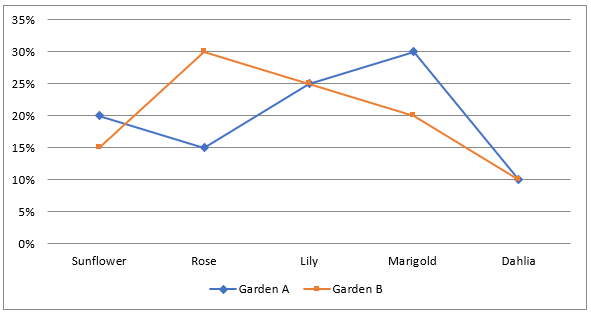

Q2. If total Rose in garden ‘A’ is 40% of total Rose in garden ‘B’, then find total flowers in garden ‘B’ is how much percent more than total flower in garden ‘A’?
(a) 20%
(b) 15%
(c) 10%
(d) 25%
(e) 30%
Q3. If total number of flowers in garden ‘B’ is 40% more than that of in garden ‘A’ and total number of Dahlias in garden ‘A’ & ‘B’ together is 384, then find the total number of Marigold in both garden ‘A’ & ‘B’ together?
(a) 928
(b) 918
(c) 920
(d) 936
(e) 948

Q5. Total flower in garden ‘B’ is 80% more than total flower in garden ‘A’ and total lily in both gardens is 840, then find difference between total marigold in garden ‘A’ and total dahlia in garden ‘B’?
(a) 142
(b) 140
(c) 144
(d) 148
(e) 152
Directions (6-10): Study the line chart given below and answer the following questions.
Line chart shows the markup percentage with respect to cost price and profit percentage of five articles.
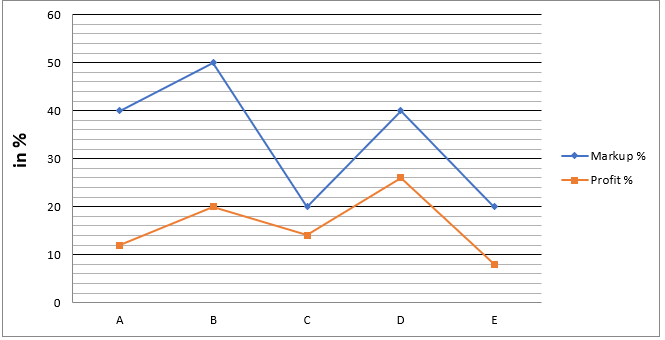
Q6. If discount allowed on article-C & E is Rs.48 & Rs.120 respectively, then find ratio of selling price of article-C to selling price of article-E.
(a) 38 : 45
(b) 21 : 22
(c) 5 : 12
(d) 27 : 35
(e) 2 : 3

Q8. If discount allowed on article-B is halved, then find the change in profit percentage.
(a) 10%
(b) 20%
(c) 15%
(d) 25%
(e) 5%
Q9. If marked price of article-C is 60% more than that of article-B and difference between discount allowed on article-B & article-C is Rs.72, then find average of cost price of article-C & B.
(a) Rs.600
(b) Rs.300
(c) Rs.500
(d) Rs.700
(e) Rs.400
Q10. If cost price of article-D is 25% of marked price of article-E, then find selling price of article-D is what percent of selling price of article-E?
(a) 25%
(b) 60%
(c) 15%
(d) 50%
(e) 35%
Solutions
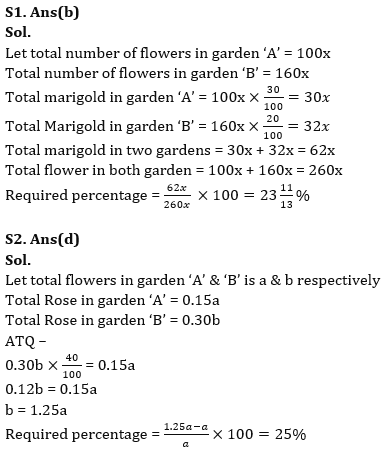
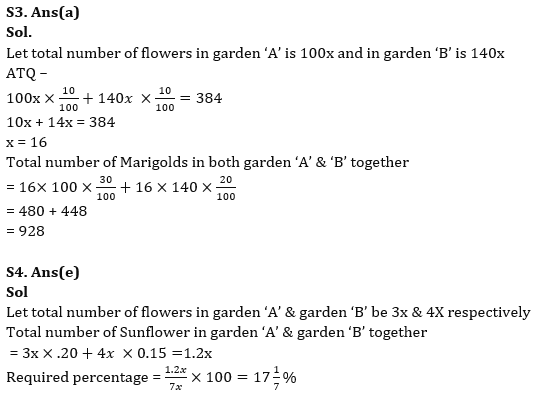
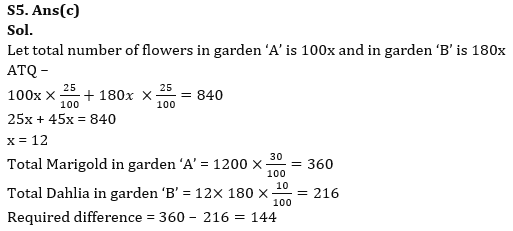
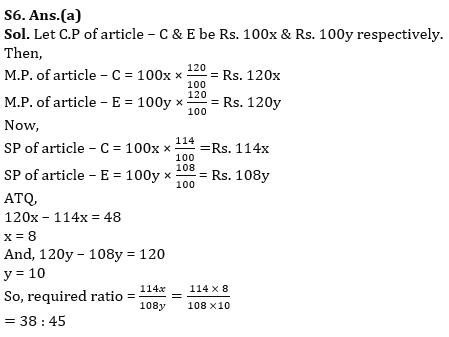
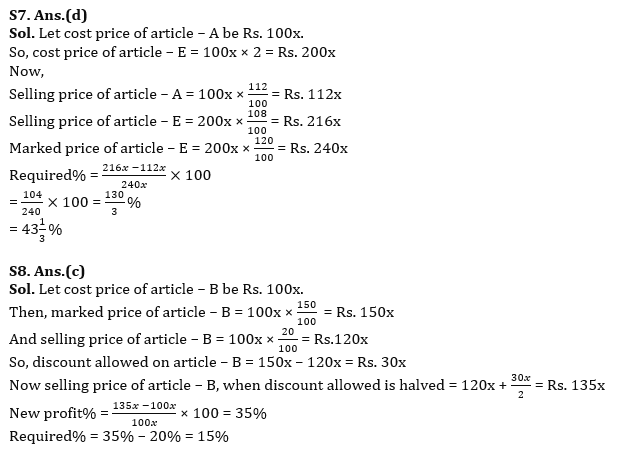
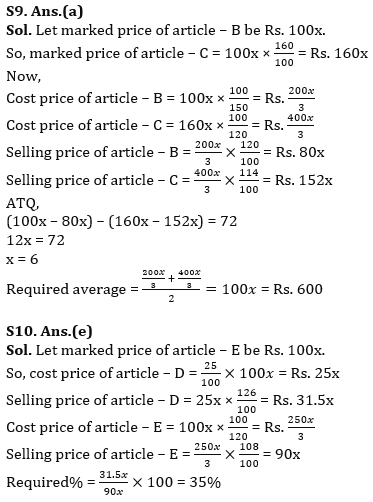


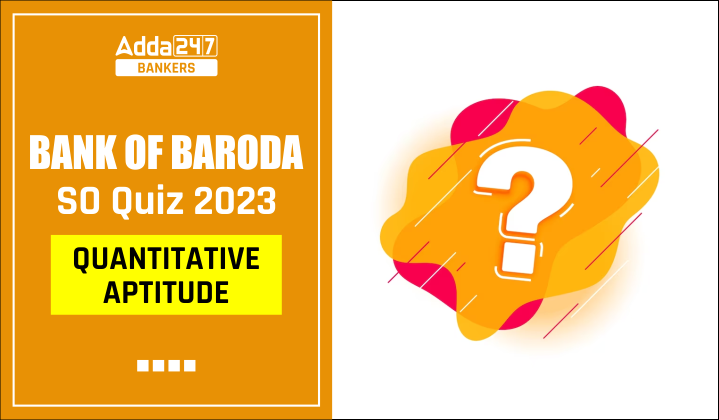


 Data Interpretation Questions for SBI PO...
Data Interpretation Questions for SBI PO...
 Data Interpretation Questions For Bank E...
Data Interpretation Questions For Bank E...
 Quantitative Aptitude Quiz For Bank Main...
Quantitative Aptitude Quiz For Bank Main...





